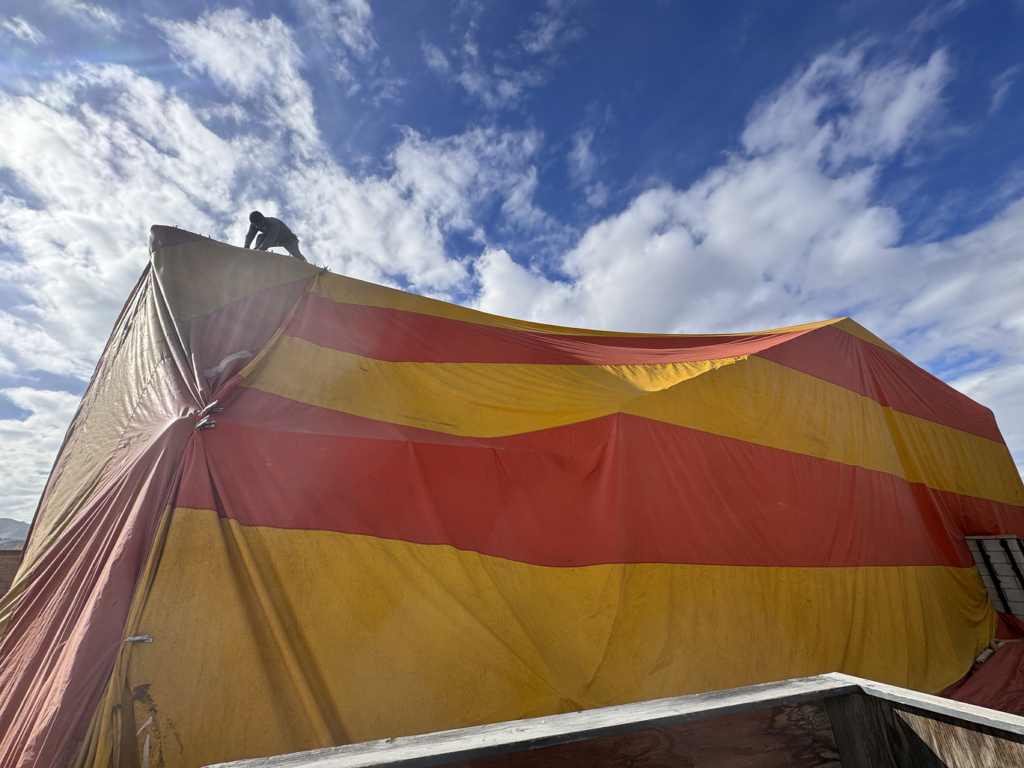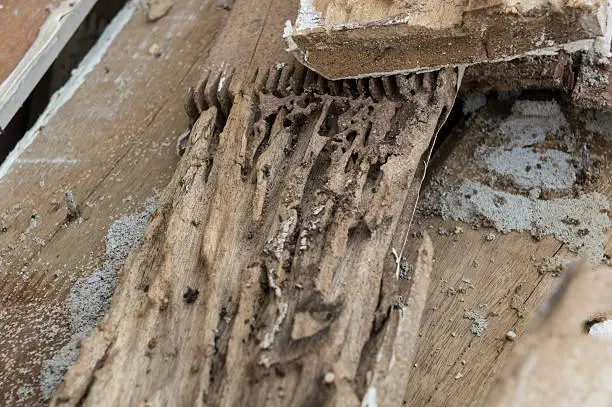

Fumigation is one of the most reliable methods for eliminating termites, offering a complete and long-lasting solution. Unlike localized treatments that only target specific areas, whole-structure fumigation ensures that every part of the building is treated, even in hard-to-reach spaces. By sealing the structure and introducing a fumigant, termites are eradicated in a single treatment, making it ideal for severe infestations. This method has been used for decades due to its effectiveness in providing thorough termite control.
Before the process begins, our licensed technicians conduct a detailed inspection to assess the extent of the infestation. Once fumigation is scheduled, occupants must vacate the property for approximately 48 hours. Our team then seals the structure with a tent and pumps Vikane gas into the enclosed space. This gas replaces oxygen, penetrating deep into walls, floors, and hidden crevices where termites reside. After 24 hours, we carefully remove the tent and ventilate the property to ensure it is safe for re-entry. A final inspection is performed to confirm the success of the treatment before allowing occupants to return.

Technicians at Southland Pest Control are highly trained and state-licensed, ensuring they have the expertise to handle any termite infestation effectively. Continuous education and training keep them updated on the latest pest control methods.
After the initial termite treatment, we offer follow-up services to monitor the effectiveness of the treatment and address any recurring issues. Regular check-ups ensure a long-term solution to termite problems.
Experience Top-Quality Pest Control & Prevention – Safe, Effective, and Long-Lasting!
Keep your home pest-free with Southland Pest Control’s reliable and customized solutions for all types of unwanted intruders.
Protect your property from costly termite damage with Southland Pest Control’s advanced detection and treatment solutions
Say goodbye to rats, mice gophers and squirrels with Southland Pest Control’s expert rodent removal and prevention services.
Protect your home and family from the nuisance and health risks of mosquitoes with Southland Pest Control's effective and eco-friendly mosquito control solutions
Heat treatment offers a chemical-free alternative for termite extermination. This method raises the temperature inside the structure to levels that are lethal to termites, ensuring they are eliminated without the use of pesticides. Unlike fumigation, heat treatment can be completed in just a few hours, and occupants can return to their home on the same day.


For smaller infestations, localized spot treatments provide a targeted and cost-effective solution. After inspecting the affected areas, our technicians apply a specialized treatment directly to the infested wood. This method requires little to no preparation and does not require evacuating the home, making it a convenient option for homeowners dealing with isolated termite activity.
Orange oil is a natural, eco-friendly solution that eliminates termites without using traditional pesticides. It works by injecting orange oil directly into exposed wood, killing termites and their eggs on contact. This quick and non-invasive treatment allows you to remain in your home during the process, making it a popular alternative to chemical-based methods.

Proper preparation is essential for a successful fumigation. Occupants must remove or seal food items that aren’t in factory-sealed containers or place them in special fumigation bags provided by our team. Houseplants, pets, and pet food should also be removed. To maximize the fumigant’s effectiveness, interior doors, drawers, and cabinets should be left open to allow full penetration. Additionally, outdoor plants and shrubs should be trimmed back to prevent interference with the tenting process. If you have any questions about preparing for fumigation, our team is happy to assist you.
We stand by the effectiveness of our fumigation service with a 3-year warranty. If termites return within this period, we will provide localized treatments at no additional cost. This warranty ensures long-term protection and gives homeowners peace of mind knowing their property remains safeguarded. Choosing Southland Pest Control means opting for a proven termite control solution backed by experienced professionals dedicated to quality service and customer satisfaction.
Our team is fully trained and licensed to secure your home from invasive termites.
We make pest control simple, effective, and hassle-free.
Here’s what you can expect when working with Southland Pest Control:
Our expert technicians thoroughly inspect your property to identify pest activity, entry points, and risk factors.
We use industry-leading, family- and pet-safe treatments to eliminate pests without harming the environment.
We offer follow-up services, preventative treatments, and expert advice to keep pests from coming back.
We develop a targeted solution based on the type of infestation, property layout, and your specific needs.
Our team applies treatments strategically for maximum effectiveness, ensuring long-lasting protection.
Your peace of mind is our priority! We stand behind our services with warranties and customer support.

Copyright © 2025 Southland Pest Control. All rights reserved.
Pest Control Marketing by Streamline Results